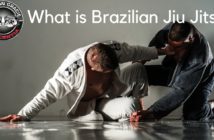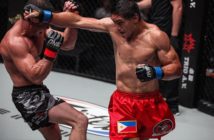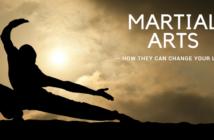by Will Wain-Williams
Xinyi Liuhe Quan is a very old, and somewhat rare system of Chinese martial arts, originating in the Chinese military before being passed down among Hui Muslim communities and then finally finding its way to Shanghai at the turn of the 20th century. The system is considered an “internal” style of martial arts, a fairly fuzzy term, which implies that power is derived through relaxation and correct alignment of the body as opposed to brute force. It is considered the ancestor of several more modern martial arts systems such as Xinyi Quan and Da Cheng Quan.
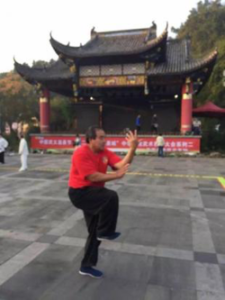 Movements and strategy
Movements and strategy
The movements and strategies of Xinyi Liuhe Quan reflect the military nature of the system, as legend has it they were derived from the famous general and patriot Yue Fei, who made a system of hand-to-hand combat based on his high level of skill with the spear and bow-and-arrow. The movements are outwardly linear, however they utilize coiling of the body to generate power, and require flexibility and strength in the hips and waist. There are no high kicks or flashy, performance based movements. The overruling strategy is to engage the opponent directly and finish the fight as quickly as possible, focussing all your power forward. If you imagine a regiment of troops in battle, all marching forward towards the enemy, then this concept is easy to understand. Just as a regiment moves as a whole unit, in Xinyi Liuhe Quan, the body also moves as one. The Chinese word Liuhe in fact means “six harmonies” and refers to the feet, knees, hips, shoulders, elbows and hands all moving unison. At the same time the practitioner must have a kind of “killer intent” when they fight, concentrating totally on the task at hand, which is one of several interpretations of Xinyi, which literally translates as heart-mind.
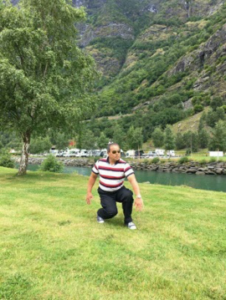 The system
The system
The core of the system is made up of Shi Da Xing, or ten great shapes. In fact, in Shanghai, the system is colloquially known just by that name. The ten great shapes are ten different animals, however it doesn’t mean imitating animals movements, rather understanding and implementing the characteristics of certain animals, for example the raw power of how a tiger pounces on prey, the agility of a monkey or the speed and viciousness with which an eagle swoops. The ten animals are: hawk, eagle, chicken, swallow, snake, dragon, bear, tiger, monkey and horse. Each animal has its own strategies and techniques, and suits a person of a certain body type, for example a large bulky framed person might focus on bear, which uses a lot of heavy power to overwhelm, whereas a slim framed person might focus on swallow, which swoops down suddenly only to dart up again unexpectedly. Several weapons are also taught, including of course, the spear, as well as the sabre, sword and two-sectioned staff. The weapons are regarded as an extension of the hands, and so the techniques and strategies are much the same regardless.
Combat
Besides being an effective fighting system, Xinyi Liuhe Quan is also well known for the longevity of its practitioners. Many masters have lived to be in their 90s and even 100s and practiced right up to their last days. This is due to the holistic workout gained through training; there are three levels a student will go through. The first will be training of the muscles, the second is the training of the tendons and bones, and the last level is the training of the blood and qi. The combination of relaxation and tension, as well as the twisting movements of the trunk of the body ensure a whole body workout, while various meditative exercises are also carried out to train the mind.
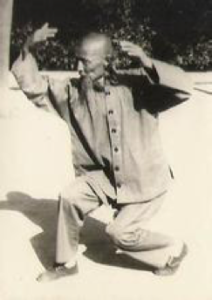 Heritage
Heritage
Xinyi Liuhe Quan was passed down in Henan province among communities of Muslim Hui people, who were historically very conservative and closed people, due to discrimination by the Han majority. It is possibly due to this that the system was able to remain relatively unchanged and preserve the brutal nature that arose from its military origins. It was brought to Shanghai early in the twentieth century by a man named Lu Song Gao, a native of Zhoukou County in Henan. Born in 1875 and passed away in 1961, he began his martial arts training during childhood, studying under the seventh generation master Yuan Feng Yi. As a young man he took a job as an armed bodyguard escorting cargo around China, before moving to Anhui and Nanjing, before finally settling in Shanghai where he was hired to work security at a flour factory. It was here that he had a lot of free time to refine his art, and his reputation grew as an excellent fighter. During this time he made acquaintance with a man named Ding Ren 丁仁, who was also a native of Henan. Ding was also highly, and was two generations higher than Lu. Being impressed with Lu’s skill, he told him that passing on Xinyi Liuhe Quan would be his responsibility, and so spent the next six months visiting him in the Mosque daily to learn all he could from him.
Keeping the style alive
Transmission outside of the Muslim community is generally acknowledged as beginning with a man named Jie Xing Bang, who was originally a native of Hebei province, but grew up in Shanghai where he was an underground agent for the communist party while working as a police detective for Yangpu district during the Republic era. At 1.9m tall, he was keen on martial arts from a young age, and in order to study Xinyi Liuhe Quan pretended to be a Muslim to gain access. He became a student of Lu Song Gao and became a top class fighter who was admired by his peers. It was after encountering him that Lu Song Gao opened his doors to all whether Muslim or not.
Where it can be found
Since that time Xinyi Liuhe Quan has spread throughout Shanghai and become one of its representative martial arts styles. Today you can find people in almost every park in the city practicing in the morning, who are attracted to it for its health benefits, as well as more serious practitioners who practice the system in its entirety, albeit often behind closed doors.
To find out more you can visit www.monkeystealspeach.com


 Movements and strategy
Movements and strategy The system
The system Heritage
Heritage